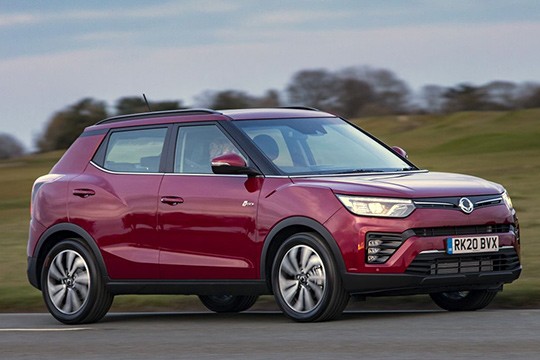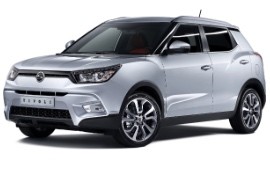SSANGYONG Tivoli Models/Series Timeline, Specifications & Photos
First production year: 2015
Engines: Gasoline, Diesel
Body style: SUV (Sports Utility Vehicle)
Named after a famous Italian town, the compact crossover Tivoli was refreshed in 2019 as part of the Korean car-maker plan to expand into the European market.
It was the smallest member of the SsangYong family, and it faced the stiff European competition in that segment. Despite having an all-wheel-drive system, it couldn't meet other cars' challenges from its class such as the Renault Captur or the Dacia Duster.
In 2019, SsangYong refreshed the Tivoli lineup in an attempt to be ahead of the game with respecting the 2021 Euro 6d rules. The restyled front end featured a new design for the headlights and grille. They were softened when compared to the non-facelifted version. The taillights kept the same shape but enhanced.
Inside, the Tivoli featured a completely 10.25" digital instrument cluster. On the center stack, a standard 8" touch-screen display controlled the infotainment system, which was Apple CarPlay and Android Auto compatible.
For the drivetrain, SsangYong introduced a new range of engines in the Tivoli range. There was a new, 1.2-liter turbocharged engine that offered 128 hp. The 1.5-liter T-GDI (turbocharged with direct fuel injection) was the other gasoline option for the small crossover, offering 163 hp. The Korean car-maker offered a 1.6-liter diesel unit, updated to the latest emission standards.
The Korean carmaker SsangYong tried to upgrade its model lineup and introduced the Tivoli as a compact-sized crossover contender.
After dodging another bullet, SsangYong started to rise again thanks to its new owner Mahindra&Mahindra. One of its first projects was the Tivoli, which spelled backward says "I lov it." Even though they lost an "e" in the process, it was a nice marketing strategy. The car was supposed to pull the carmaker out of its troubles, but it quite really did that. But unfortunately, one of the company's biggest problems was its brand awareness. Despite the vehicle's qualities, it was not the hot-cake SsangYong had hoped for.
In the past, SsangYong cars suffered from poor design, but the Tivoli was a completely different vehicle, with a clean design concept that started from a blank sheet of paper. Its slightly swept-back headlights flanked a narrow grille that sported a slat and the company's badge in the middle. Cooling was ensured by a lower-mounted grille in the apron. The flared wheel arches and sculptured door panels were nothing short of other carmakers' design concepts. Thanks to the blacked-out B-pillar, the car seemed to be longer, while the raked-forward C-pillars added a flair of a free-floating roof concept.
The interior boasted a nice, clean design, with several colors available for the dashboard, not just black or gray. Thanks to the high-mounted seats, there was enough room for four adult-sized passengers. In the instrument cluster, the carmaker placed two large dials for the speedometer and tachometer, while a thin-film TFT display sat between them and showed the onboard computer information.
Under the hood, SsangYong installed a choice of two engines: a turbo-diesel and a naturally-aspirated gasoline unit. Both were either paired to a six-speed manual or a six-speed automatic, with front- or all-wheel drive systems.

